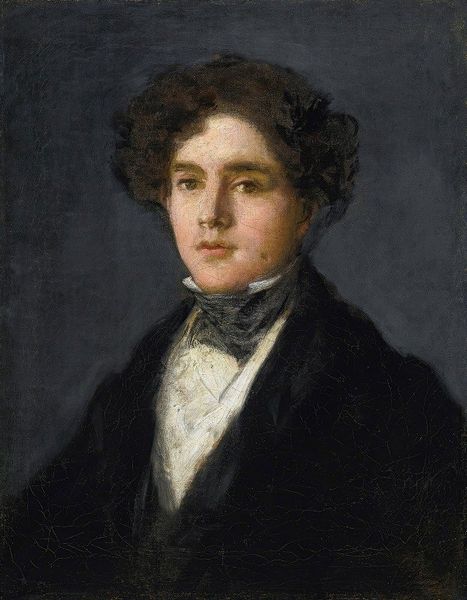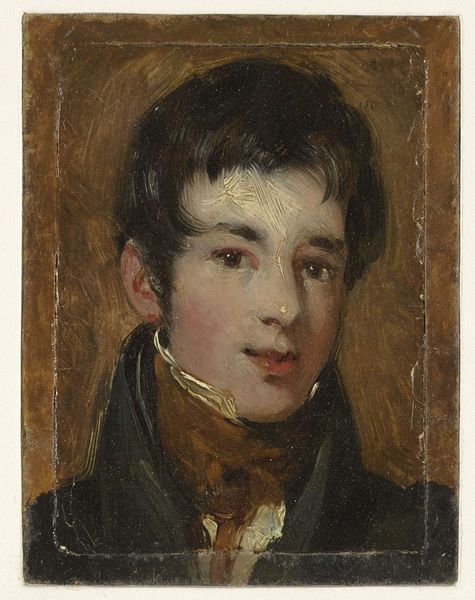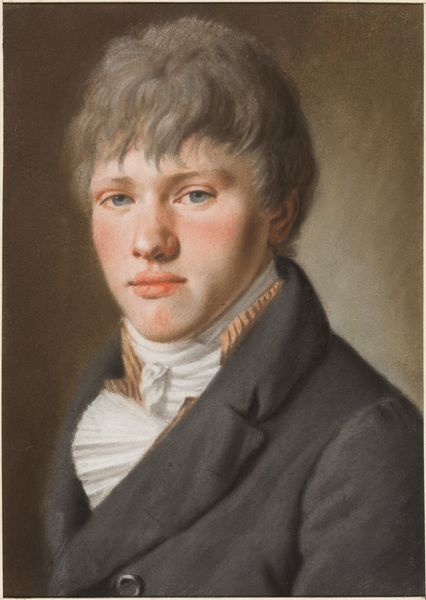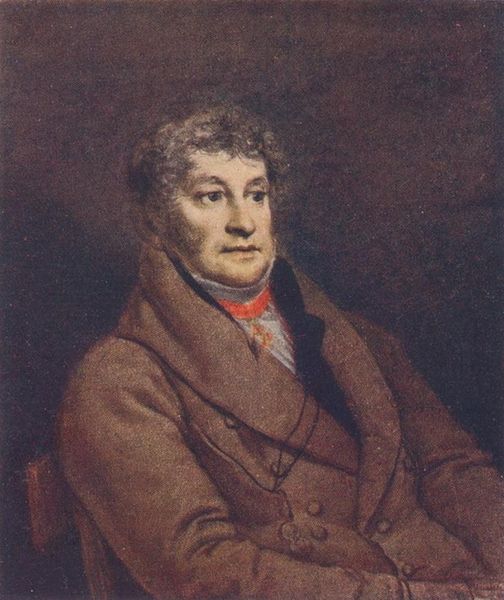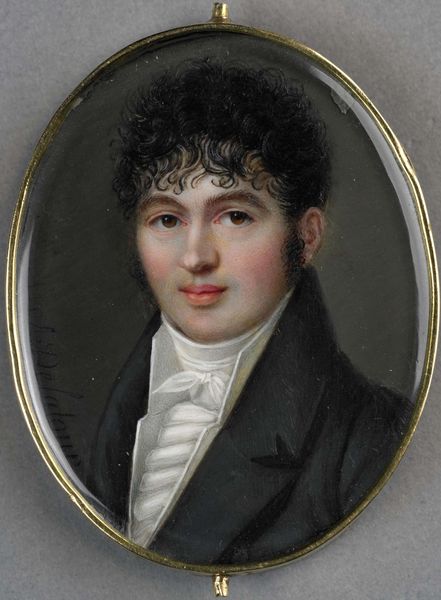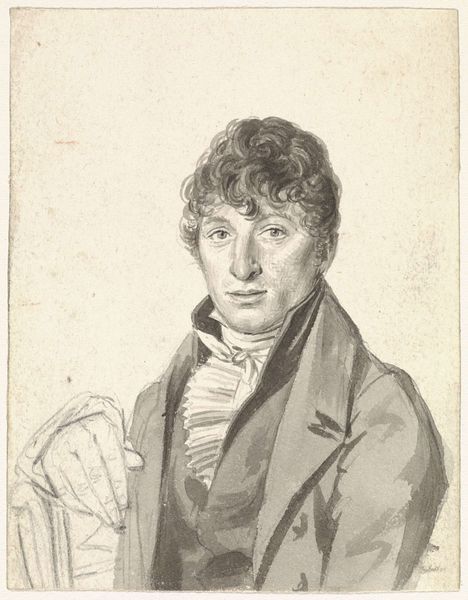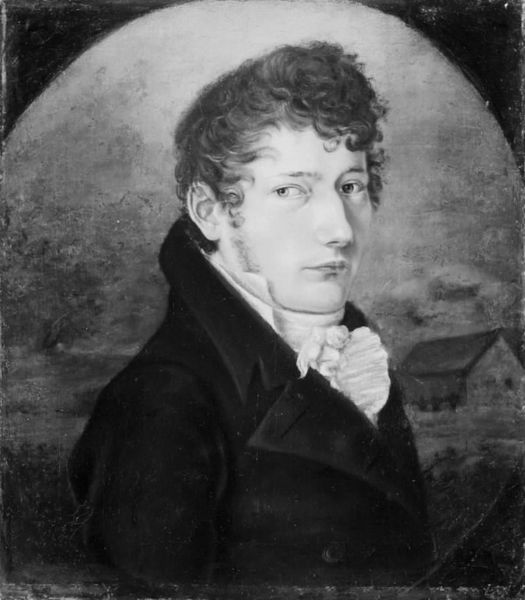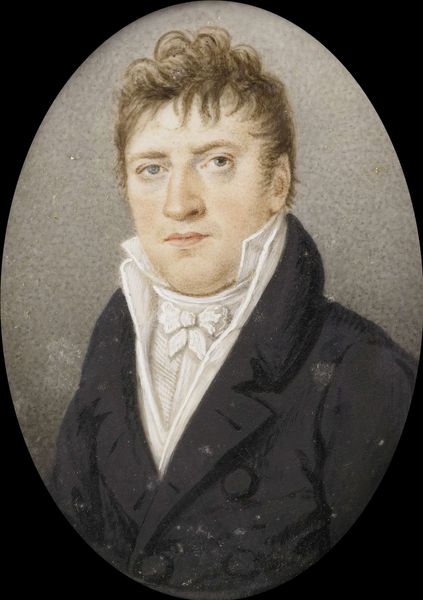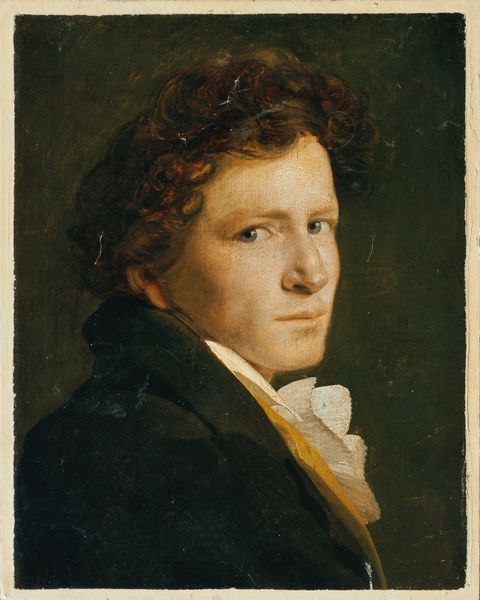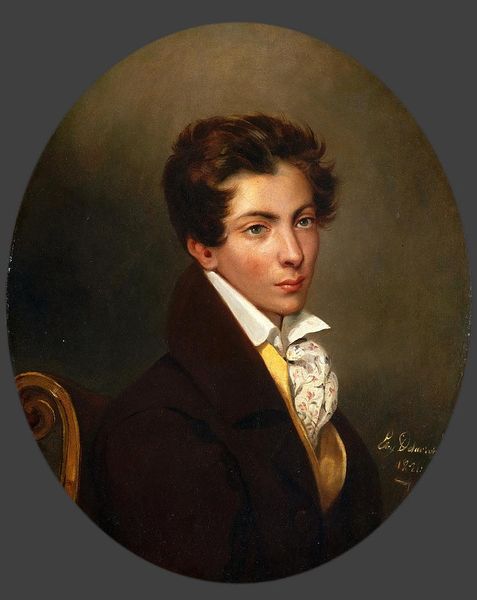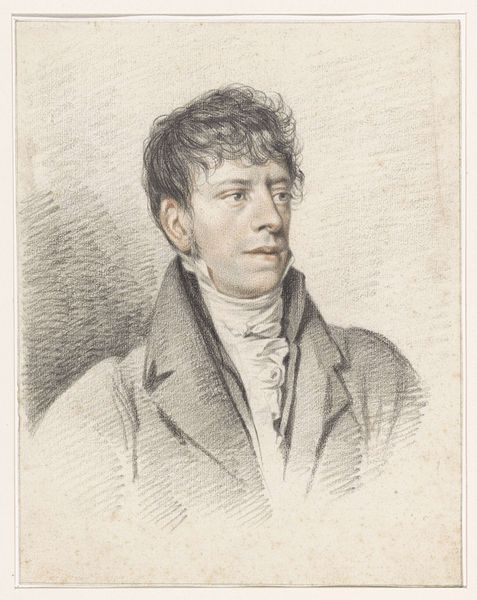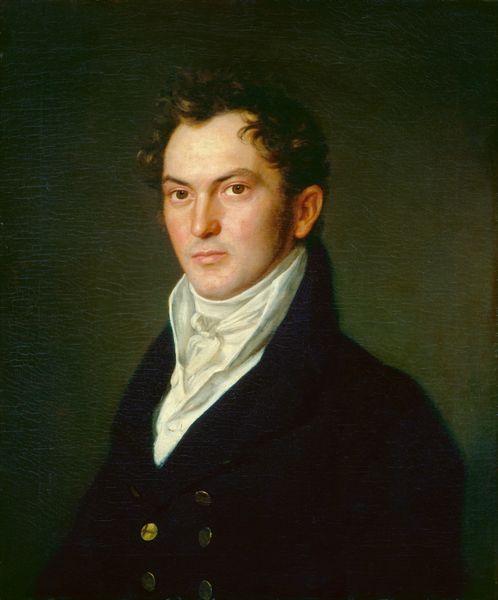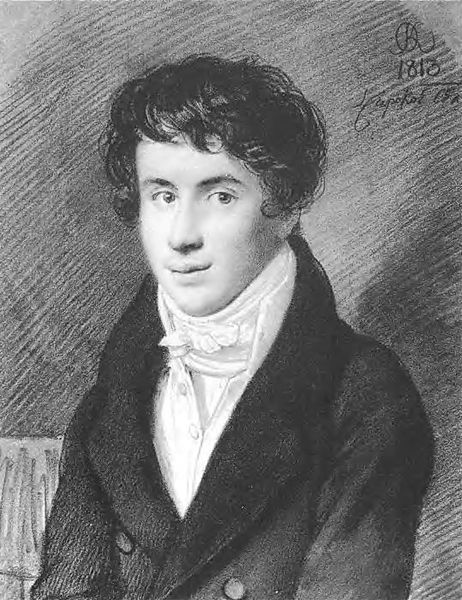
Portrait of Auguste Francois Talma, Ensign, nephew of the tragedian Talma
0:00
0:00
painting, oil-paint
#
portrait
#
neoclacissism
#
character portrait
#
head
#
portrait image
#
painting
#
oil-paint
#
portrait reference
#
male-portraits
#
portrait head and shoulder
#
portrait drawing
#
facial portrait
#
academic-art
#
forehead
#
portrait art
#
fine art portrait
#
realism
#
celebrity portrait
#
digital portrait
Copyright: Public domain
Curator: This is Jean-Auguste-Dominique Ingres' "Portrait of Auguste Francois Talma, Ensign, nephew of the tragedian Talma." It's an oil painting that exemplifies his neoclassical style. Editor: My first impression? The painting has a softness to it, despite the rigid formality. It feels intimate, like a stolen moment rather than a posed sitting. Curator: Definitely. Ingres was meticulous with his materials. He used thin glazes of oil paint to achieve a porcelain-like finish, emphasizing smooth surfaces and linear precision which are all about showcasing technical skill and quality materials. Editor: But it's interesting to view this work beyond its technique. Talma here is presented as youthful and hopeful, just on the cusp of a military career and his role seems symbolic given his uncle was a tragedian. He appears as a symbol of aspiration amidst social upheaval after the Revolution. What’s the intention behind immortalizing this young man with such soft elegance, considering his future in war? Curator: A sharp point! It’s hard not to think about the commodification of even these intimate, familial representations. Oil paintings at the time had become almost a tool of status. What kind of material conditions allows a family to commission such art and ensure their likenesses would survive. Editor: Indeed. There’s tension—on one hand, neoclassical restraint and on the other, hints of a life potentially embroiled in the Napoleonic conflicts. It encourages reflections on the human cost obscured by formal portraits that mainly reinforce social hierarchies. Curator: Ultimately, I still see this primarily as a testament to the labor involved. Consider the hours dedicated to creating this polished surface and the expense of the materials alone… it offers a study into artistic labor and access. Editor: Yes, but perhaps also a look at who gets remembered and how – and to what ends their images were, and continue to be, consumed. Curator: Food for thought, indeed. Editor: Precisely. It challenges us to keep digging deeper beneath the surface.
Comments
No comments
Be the first to comment and join the conversation on the ultimate creative platform.

